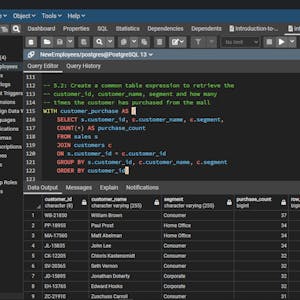Modeling Climate Anomalies with Statistical Analysis

$49
ENROLL NOWCourse Overview
This course introduces the use of statistical analysis in Python programming to study and model climate data, specifically with the SciPy and NumPy package. Topics include data visualization, predictive model development, simple linear regression, multivariate linear regression, multivariate linear regression with interaction, and logistic regression. Strong emphasis will be placed on gathering and analyzing climate data with the Python programming language. This course can be taken for academic credit as part of CU Boulder’s Master of Science in Data Science (MS-DS) degree offered on the Coursera platform. The MS-DS is an interdisciplinary degree that brings together faculty from CU Boulder’s departments of Applied Mathematics, Computer Science, Information Science, and others. The degree offers targeted courses, short 8-week sessions, and pay-as-you-go tuition. Admission is based on performance in three preliminary courses, not academic history. CU degrees on Coursera are ideal for recent graduates or working professionals. Learn more: MS in Data Science: https://www.coursera.org/degrees/master-of-science-data-science-boulder
Course FAQs
What are the prerequisites for 'Modeling Climate Anomalies with Statistical Analysis'?
Prerequisites for this continuing education class are set by University of Colorado Boulder. Most professional development online classes benefit from some prior knowledge. Please check the provider's page for specific requirements.
Will I receive a certificate for this CE class?
Yes, upon successful completion, University of Colorado Boulder typically offers a shareable certificate to showcase your new skills and fulfill your continuing education requirements.
How long does this online course take to complete?
Completion times for online continuing education courses vary. The provider's website will have the most accurate estimate of the time commitment needed.





